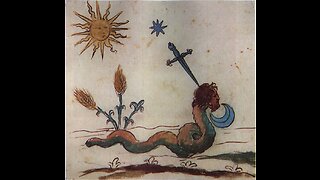The Geys and HeLa Cells
Though it took three decades for the Geys to succeed with their efforts to create a human cell line, after their success with HeLa, culturing cells became suspiciously easy. Researchers cultivated tissue samples from their own bodies and the bodies of their families and patients. Most grew successfully. Sure, the samples struggled during the first few weeks, or even months, in culture, but then, suddenly, they flourished. Samples blossomed into full-blown healthy cell lines with the strength of, well, the HeLa cell.
In 1974, a researcher by the name of Walter Nelson-Rees started what everyone called a nasty rumor:
HeLa cells, he claimed, had infiltrated the world's stock of cell cultures. No one wanted to believe him. For almost three decades researchers had done complex experiments on what they thought were breast cells, prostate cells, or placental cells, and suddenly, rumor had it they'd been working with HeLa cells all along. To believe this would be to believe that years of work and millions of dollars had, in essence, been wasted.
http://berkeleysciencereview.com/article/good-bad-hela/?fbclid=IwAR2uy6aL_zN5s23QhE9-WkQq9ZhRINrCaLtmpJyg70J5i60ZlVBRgQfefwo
After sterilising everything and donning a surgical cap and mask, she cut the sample into one-millimetre dice, dropped each tiny square onto a chicken blood clot in a test tube, and covered it with a few drops of the mixture of broths, salts and umbilical cord blood that was the cells’ experimental plat du jour. She then plugged each test tube with a rubber stopper, labelled it ‘HeLa’ for the patient’s first and last names, and inserted it into a crazy rig that George Gey had fashioned out of junkyard scraps to keep the cells warm and in constant motion.
A couple of days later, the little clots at the bottom of the test tubes had sprouted a whitish ring of new cells. Mary Kubicek didn’t think much of it. Many of the samples she had cultured over the years had survived and reproduced initially, only to die off after a few days. The next time she looked, however, she noticed that these cells weren’t just growing, they were proliferating. She split them up into new test tubes. They kept on multiplying, doubling approximately every 24 hours, ‘spreading like crabgrass’, as she later recalled. As long as they were kept warm and fed, HeLa cells seemed indestructible, unstoppable, potentially immortal. The Geys were ecstatic, and started to send out samples to colleagues. They sent HeLa cells to Texas, New York, Amsterdam, India and Chile, in cardboard boxes packed with sawdust, in the shirt-pockets of pilots and air stewards, and on one occasion, in the saddlebag of a mule. On 10 April 1951, George Gey appeared on local television waving a pint bottle full of HeLa, and predicting the medical marvels that it would make possible.
Lacks had been combined with tobacco DNA to produce the first human/plant hybrid.
In time, however, this mid-century idealism metamorphosed into hubris. In 1954, Chester Southam, the chief of virology at the Sloan-Kettering Institute for Cancer Research, began to inject HeLa cells into the arms of cancer patients to see if he could induce tumours. He failed to inform his research subjects that the cells were cancerous, on the grounds that it might upset them, and went on to do the same experiment on healthy volunteers from a state penitentiary, and on hundreds of gynaecological surgery patients. In 1963, he made the mistake of trying to involve three doctors at the Jewish Chronic Disease Hospital in Brooklyn, whose memories of the Nuremberg Doctors’ Trial were vivid enough for them to make the connection between his research and Nazi medical atrocities. Their protest led to others, culminating in the revelation of the Tuskegee syphilis study
https://www.lrb.co.uk/the-paper/v32/n11/cathy-gere/dying-and-not-dying
Stealth secretions:
https://pubmed.ncbi.nlm.nih.gov/26812803/
https://vimeo.com/9581140?fbclid=IwAR15tirLYwRHClMIK0djV4MXDz3TjP3N1VKcT9eBSIJ0zg7M10e69aVpZ2g
-

Epstein Borreliosis AIDS
1 year agoMel Thornburg, Sepsis
1.12K7 -
 LIVE
LIVE
Vigilant News Network
9 hours agoMedia Blackout: 10 News Stories They Chose Not to Tell You - Episode 26
3,023 watching -
 1:18:16
1:18:16
The Late Kick with Josh Pate
6 hours agoLate Kick Live Ep 520: SEC vs Texas | Unpopular CFB Opinions | PennSt Whiteout Issues | Bama Mood
22.1K1 -
 LIVE
LIVE
Right Side Broadcasting Network
6 days agoLIVE REPLAY: President Donald J. Trump Holds a Rally in Las Vegas, NV - 6/9/24
6,304 watching -
 16:09
16:09
Clownfish TV
9 hours agoMicrosoft DISABLES Windows Recall After MASSIVE Public Backlash!
16.8K37 -
 16:17
16:17
TENET Media
12 hours agoThe Shopping Cart Theory | Matt Christiansen
15.8K17 -
 17:55
17:55
JoBlo Originals
21 hours agoWhat Happened to EPIC MEAL TIME?
17.7K4 -
 31:02
31:02
Degenerate Plays
11 hours agoBest Girl Needs Her Swimsuit - Final Fantasy 7: Ever Crisis : Part 2
17K1 -
 48:14
48:14
World Nomac
1 day agoMy First Time in Shanghai, China 🇨🇳
19.1K5 -
 2:57:13
2:57:13
SNEAKO
11 hours ago"Who Do You Hate the Most?" - One Minute Podcast
92.2K89